Indenture Papers
of the Stout Family
Indentures are legal documents that bound people together.
These agreements always dealt with economics - indentured service,
borrowing money, or the purchase of land and buildings. The indentures
shown are deeds for land either bought or sold by the early Perkasie
family named Stout.
Early indentures (deeds) were written by scribes because most
people had little or no formal education. Early deeds were on
parchment (sheep skin). Deeds were different from other writing
because they were written as one long sentence. This one sentence
has detailed information about the people selling and buying the
property - their occupation, current residence and relationship
to previous owners. The property's location is described in detail
and the price paid.
The indenture was signed by the seller, buyer, witnesses, and
a government official.
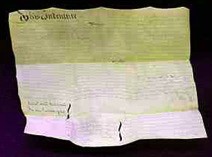 |
|
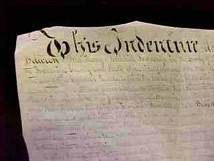 |
| This indenture contracts
John Heany and wife to sell 58 acres of land in Rockhill Township to Jacob
Stout in 1807. |
|
This close-u show the calligraphy of the scribe.
Notice how the parchment is cut in an irregular pattern. |
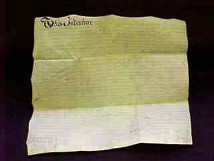 |
|
 |
| There were two copies of
each indenture. A large piece of parchment was cut in half, but with an
irregular pattern. To prove authenticity the two copies could be put together
to show that they came from the same piece of parchment. |
|
Notice that Peter and Jacob made their mark,
an "X". Neither could write. The scribe wrote their names..
Peter and Jacob signed their names with an "X" (dated 1807). |
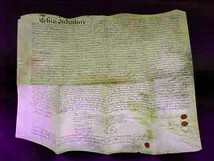 |
|
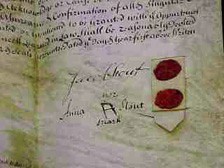 |
| The indenture shows that Perkasie's
first settler sells land to his son-in-law John Lacey. Both Jacob Stout
and John Lacey are described as potters. |
|
Jacob Stout was known as an educated man. He
signed his own name on the indenture while his wife signed by her mark,
an "A" for Anna. (dated 1759). |


